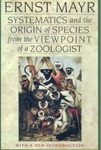![Inside the Lost Museum Inside the Lost Museum]()
Click to have a closer look
About this book
Contents
Customer reviews
Biography
Related titles
About this book
Curators make many decisions when they build collections or design exhibitions, plotting a passage of discovery that also tells an essential story. Collecting captures the past in a way useful to the present and the future. Exhibits play to our senses and orchestrate our impressions, balancing presentation and preservation, information and emotion. Curators consider visitors' interactions with objects and with one another, how our bodies move through displays, how our eyes grasp objects, how we learn and how we feel. Inside the Lost Museum documents the work museums do and suggests ways these institutions can enrich the educational and aesthetic experience of their visitors.
Woven throughout Inside the Lost Museum is the story of the Jenks Museum at Brown University, a nineteenth-century display of natural history, anthropology, and curiosities that disappeared a century ago. The Jenks Museum's past, and a recent effort by artist Mark Dion, Steven Lubar, and their students to reimagine it as art and history, serve as a framework for exploring the long record of museums' usefulness and service.
Museum lovers know that energy and mystery run through every collection and exhibition. Lubar explains work behind the scenes – collecting, preserving, displaying, and using art and artifacts in teaching, research, and community-building – through historical and contemporary examples. Inside the Lost Museum speaks to the hunt, the find, and the reveal that make curating and visiting exhibitions and using collections such a rewarding and vital pursuit.
Contents
Introduction: Explore
Part I: Collect
1. Why Collect?
2. Collectable
3. Acquisitions
4. In the Field
5. Who Collects?
Part II: Preserve
6. Into the Storeroom
7. Paperwork
8. The Ethics of Objects
Part III: Display
9. Objects, Stories, and Visitors
10. Objects on Display
11. Organ izations and Juxtapositions
12. Explanations and Encounters
13. Setting the Scene
14. Turned Inside Out
Part IV: Use
15. What Use Is a Museum?
16. Museums Make Communities
17. Learning from Things
18. Teaching with Things
19. The Promise of Museums
Coda: Critique
Notes
Acknowledgments
Illustration Credits
Index
Customer Reviews
Biography
Steven Lubar, a former museum curator and director, is Professor of American Studies at Brown University.


































